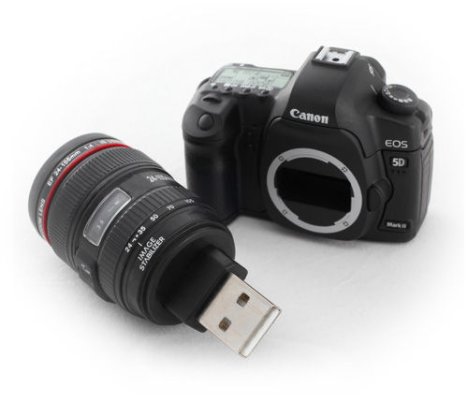
Credit to Google Images
Now, to do just that, we use the USB flash drive. The "thumb drive" first came out in 2000 and was manufactured by Trek Technology. Those flash drives started out at 8MB, 5 times the open space than in those of the floppy disks. Now, you can pick up a flash drive that has 4GB for only $15.
In fact, they've gotten even smaller. There is now what I've found to be one of the world's smallest flash drives.

Credit to Google Images

Credit to Google Images
So the design of these portable technological devices involve an incredible amount of technical knowledge that I don't have. However, I can view these through my designer eyes: what's involved in creating the aesthetics of this device to make it commercial?
In relation to it's functionality, the flash drive is smaller and easier to find room for than its predecessor. It can be plugged into a USB drive, which all modern computers have. Although most computers in the past had a floppy drive for the floppy disk, once information was on that floppy disk, you didn't have the option of taking it off. With the flash drive, you can put files on and off of it easily. Plus, unlike the floppy drive, it carries much more than the floppy drive ever could.
Reliability, on the other hand, is something of debate. Although it can last for a while, flash drives aren't made to last. According to Wikipedia, the memory or the connector of the flash drive will eventually fail. It's not to say that floppy drives didn't have their faults either, it's just that the flash drives can only take approximately 1500 connect/disconnect cycles. This means, of course, that there is room to improve this product.
How convenient the product can be used, or it's usability, is quite simple and doesn't involve breaking the product. The flash drive is inserted into the USB drive in the computer. Sometimes the connector comes out at the push of a button or the push of a small lever; others are just there ready to be inserted. As long as you know the basics of using a computer, it should be easy to put information on and off the flash drive. In this way, it's simple to use and reuse.
Proficiency for the flash drive doesn't require a lot of skill: as long as you're able to plug something into somewhere in which it looks that it should plug into, you're able to use it properly. And if you know the basics of computers, even better: you can put files on and off the flash drive. So the proficiency involved is very little unless you're technologically disabled.
Flash drives, unlike floppy disks, come in all shapes and sizes. In the creativity aspect that involves making them more personalized and, in this case, commercial and sellable, they come in all fun colors, forms, and materials.


All photos credit to Google Images
There are many more in the world of fun, cute, or just plain weird USB flash drives. I think they've proven themselves to be a profitable item in that they appeal to different people based on their personalities while also being something that people may need in order to transmit certain files to another computer. As a design, they're mostly successful: because they're easily functional and usable (though not entirely reliable), they are products that are meant for the world to think it needs. And who knows: they may have made their impact by being put on army swiss knives, but who will come up with the next fun exterior for these fashionable technological products?
No comments:
Post a Comment